Hanshuang Tong
Exploring Common and Individual Characteristics of Students via Matrix Recovering
Oct 23, 2020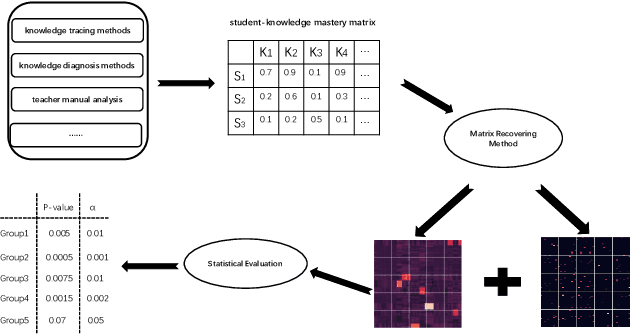
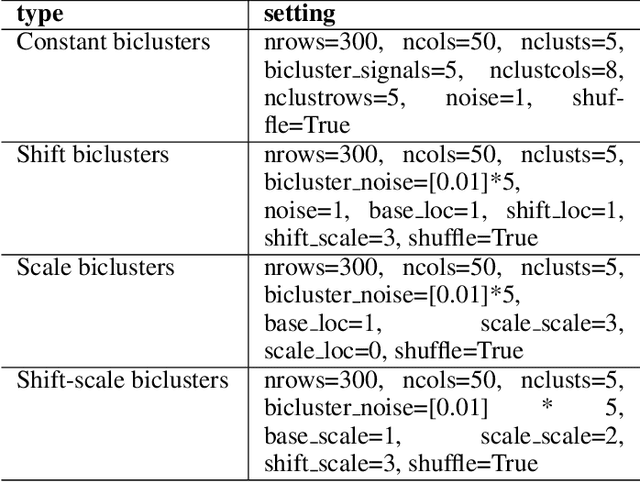
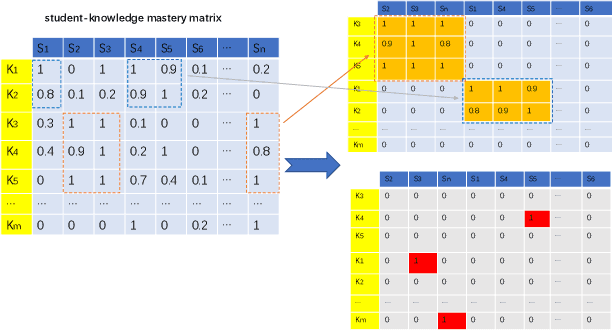
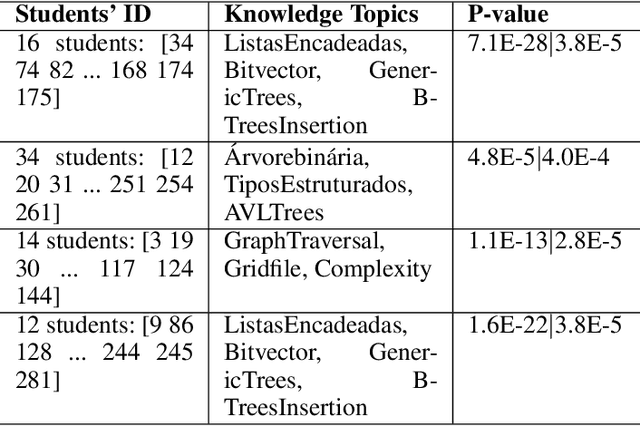
Abstract:Balancing group teaching and individual mentoring is an important issue in education area. The nature behind this issue is to explore common characteristics shared by multiple students and individual characteristics for each student. Biclustering methods have been proved successful for detecting meaningful patterns with the goal of driving group instructions based on students' characteristics. However, these methods ignore the individual characteristics of students as they only focus on common characteristics of students. In this article, we propose a framework to detect both group characteristics and individual characteristics of students simultaneously. We assume that the characteristics matrix of students' is composed of two parts: one is a low-rank matrix representing the common characteristics of students; the other is a sparse matrix representing individual characteristics of students. Thus, we treat the balancing issue as a matrix recovering problem. The experiment results show the effectiveness of our method. Firstly, it can detect meaningful biclusters that are comparable with the state-of-the-art biclutering algorithms. Secondly, it can identify individual characteristics for each student simultaneously. Both the source code of our algorithm and the real datasets are available upon request.
HGKT : Introducing Problem Schema with Hierarchical Exercise Graph for Knowledge Tracing
Jul 04, 2020
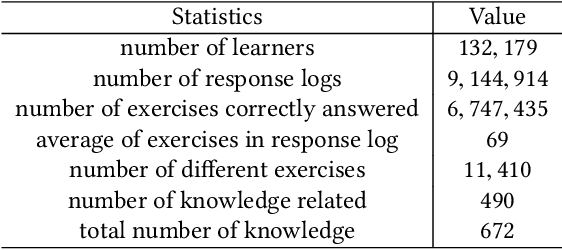


Abstract:Knowledge tracing (KT) which aims at predicting learner's knowledge mastery plays an important role in the computer-aided educational system. Given learners' exercise records, a knowledge tracing model can trace their hidden knowledge state dynamically. In recent years, many deep learning models have been applied to tackle the KT task, which has shown promising results. However, they still have limitations. Most existing methods simplify the exercising records as knowledge sequence, which fails to explore rich information existed in exercise texts. Besides, the latent hierarchical graph nature of exercises and knowledge remain unexplored. Thus, in this paper, we propose a hierarchical graph knowledge tracing model framework (HGKT) which could leverage the advantages of hierarchical exercise graph and sequence model to enhance the ability of knowledge tracing. Besides, we introduce the concept of problem schema to better represent a group of similar exercises and propose a hierarchical graph neural network to learn representations of problem schemas. Moreover, in the sequence model, we employ two attention mechanisms to highlight important historical states of students. In the testing stage, we present a K&S diagnosis matrix that could trace the transition of mastery of knowledge and problem schema, which could more easily be applied to different applications. Finally, we conduct extensive experiments to evaluate the model on a large scale real-world dataset. The results prove the effectiveness of our model and the diversity of its application scenarios.
 Add to Chrome
Add to Chrome Add to Firefox
Add to Firefox Add to Edge
Add to Edge